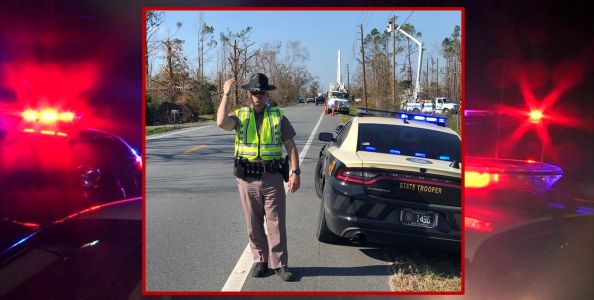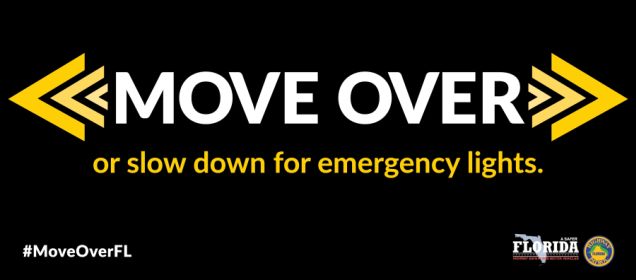
Florida Highway Safety: It’s the law, flashing lights mean ‘Move Over’ (Video)

January is Move Over month and the Florida Department of Highway Safety and Motor Vehicles (DHSMV) is urging all motorists to move over for emergency and service vehicles stopped along the roadway. In 2018, there were 231 crashes and almost 17,000 citations issued for motorists failing to move over. DHSMV and the Florida Highway Patrol (FHP) are partnering with the Florida Department of Transportation, Florida Police Chiefs Association, Florida Sheriffs Association and AAA to ensure all law enforcement, first responders, service and utility workers and Road Rangers Arrive Alive in 2019.
“When a crash occurs, law enforcement and first responders are there. When a disabled vehicle needs assistance, Road Rangers or tow truck drivers are there. When power lines need repairs, utility and service workers are there,” said DHSMV Executive Director, Terry L. Rhodes.
“The Move Over Law is in place to protect those who serve all of us on the roadways, giving them a safe space to do their jobs. Move Over, Florida, and help ensure that these public servants come home safely each day.”
The Move Over Law went into effect in 2002. The statute, which was originally introduced in 1971, requires motorists to move or yield right-of-way to emergency vehicles and in 2014, utility and sanitation vehicles were added to the Move Over Law. The Move Over Law states that drivers must move over as soon as it is safe to do so for any authorized law enforcement, emergency or service vehicles displaying any visible signals while stopped on the roadside, including Road Rangers, sanitation vehicles and tow trucks.
“Troopers, first responders and utility workers put their lives on the line every day on our roadways,” said Colonel Gene S. Spaulding, Director of the Florida Highway Patrol.
“Protect the men and women that answer the call for service in Florida and Move Over, so they can return home to their families.”
When motorists cannot vacate the lane closest to the emergency or service vehicle, they must slow to a speed that is 20 miles per hour less than the posted speed limit. Failure to yield or move over puts law enforcement officers, emergency first responders and public service workers in danger while they are on the job protecting and serving the citizens and visitors of Florida.
“This law is in place to protect the ones who protect us,” said Matt Nasworthy, Florida Public Affairs Director, AAA – The Auto Club Group.
“Not focusing on the road puts your life and others at risk. To help ensure everyone’s safety, drivers should also move over if a motorist is stranded on the side of the road.”

To comply with the Move Over Law, drivers must:
Multi-Lane Roadway:
- Vacate the lane closest to the stationary emergency vehicle, sanitation vehicle, utility service vehicle, Road Ranger or wrecker and always signal the intention to change lanes.
- Slow down to a speed of 20 mph below the posted speed limit if a driver cannot move over safely.
- Be prepared to allow those who are attempting to move over into the next lane.
Two-Lane Roadway:
- Slow down to a speed of 20 mph below the posted speed limit.
- Travel at 5 mph if the speed limit is 20 mph or less.
The public is encouraged to report aggressive drivers by dialing *FHP (*347).
For more information on the Move Over Law, visit: Move Over, Florida!, and check out the video below.
(Source: The Florida Department of Highway Safety and Motor Vehicles)
~ Written by: Richard Webster, Ace News Today / Connect with Richard on Facebook and Twitter






